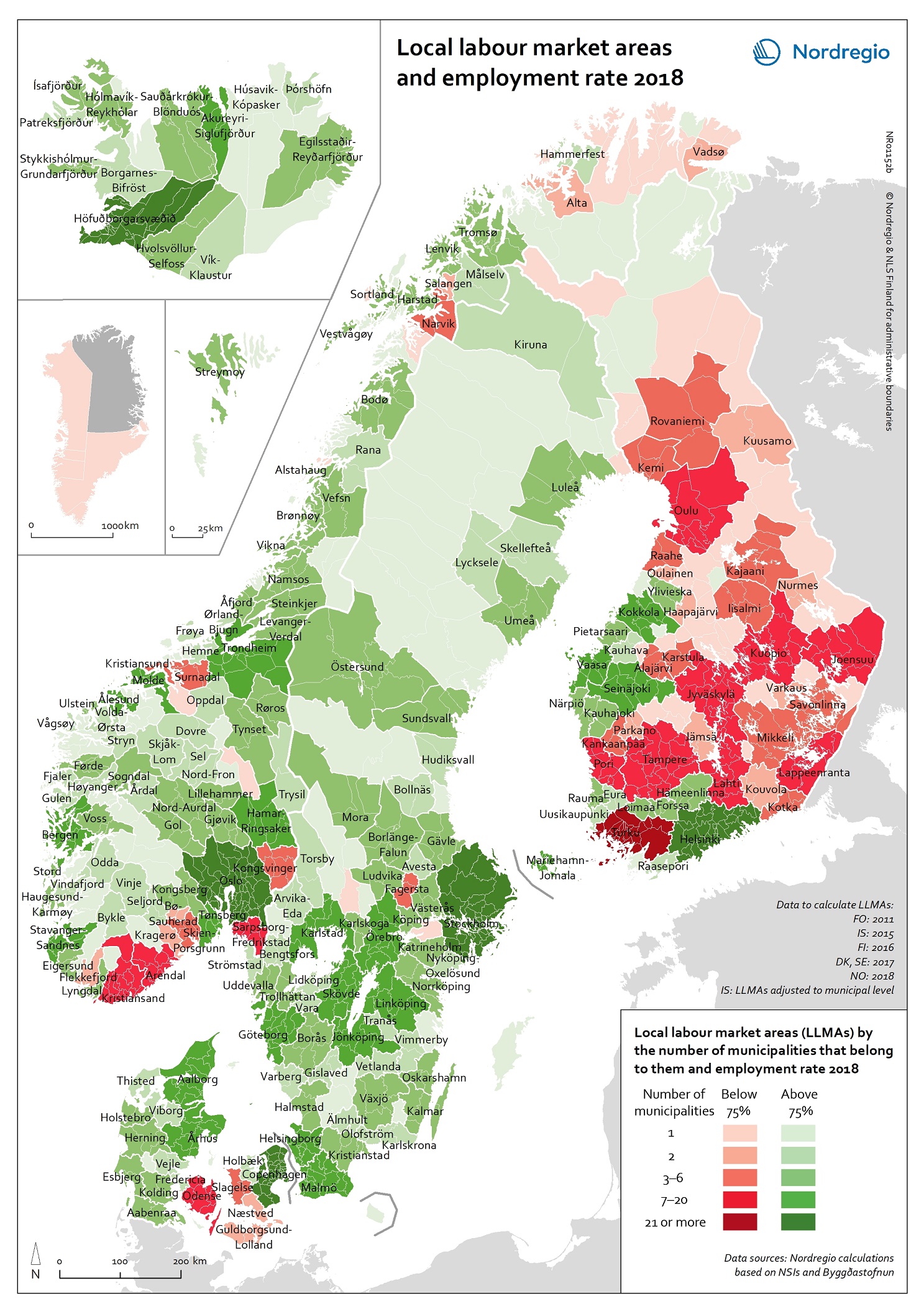This map shows the Nordic local labour market areas (LLMAs) in 2018, based on their size (number of municipalities) and whether the employment rate was above or below 75%.

The data analysis to calculate LLMAs is based on national statistics on the employed day population (i.e. places of employment), the employed night population (i.e. employed residents) and commuting over municipal borders, as municipal divisions at 1 January 2019. For Norway, the data was from 2018, for Denmark and Sweden from 2017, for Finland from 2016 and for the Faroe Islands from 2011. In Greenland, due to the large distances between municipalities, there is no daily commuting over municipal borders. Iceland lacks commuting statistics; therefore, the Icelandic LLMAs were delineated based on a study of commuter areas by the Icelandic Regional Development Institute (Byggðastofnun, 2015).
The delineation of the LLMAs was based on the methodology that comprised the following steps:
• LLMA centres should fulfil the conditions that: 1) the share of out-commuters from a municipality is no more than 20% of its employed night population, OR 2) the employed day population of a municipality is higher than its employed night population AND 3) the highest single out-commuting flow to another municipality is not more than 10% of its employed night population.
• Municipalities belonging to an LLMA should have a single out-commuting flow to another municipality that is more than 7.5% of its employed night population.
• LLMA secondary centres should fulfil the conditions that: 1) the share of out-commuters of a municipality is not more than 25% of its employed night population AND 2) the highest single out-commuting flow to another municipality is not more than 7.5% of its employed night population AND 3) the municipality has its own LLMA by having other municipalities that belong to it.
There were three exceptions to the general rules in cases when there were single out-commuting flows of over 7.5% to another municipality that could not be defined as an LLMA centre or a secondary LLMA centre. First, the municipality having its highest single out-commuting flow of over 7.5% to another municipality that was not an LLMA centre or a secondary LLMA centre but belonged to an LLMA was also included as part of the same LLMA (for instance, Tierp was included in the LLMA of Stockholm). Second, two municipalities that could not be defined as an LLMA centre or a secondary centre were identified as having a common centre, as both had their highest single out-commuting flow of over 7.5% to each other (e.g. Nyköping-Oxelösund LLMA). Third, an LLMA was created when a municipality had its highest single out-commuting flow of over 7.5% to another municipality that could not be defined as an LLMA centre or a secondary LLMA centre and that did not belong to an LLMA (e.g. Lidköping LLMA).
Read the digital publication here.



